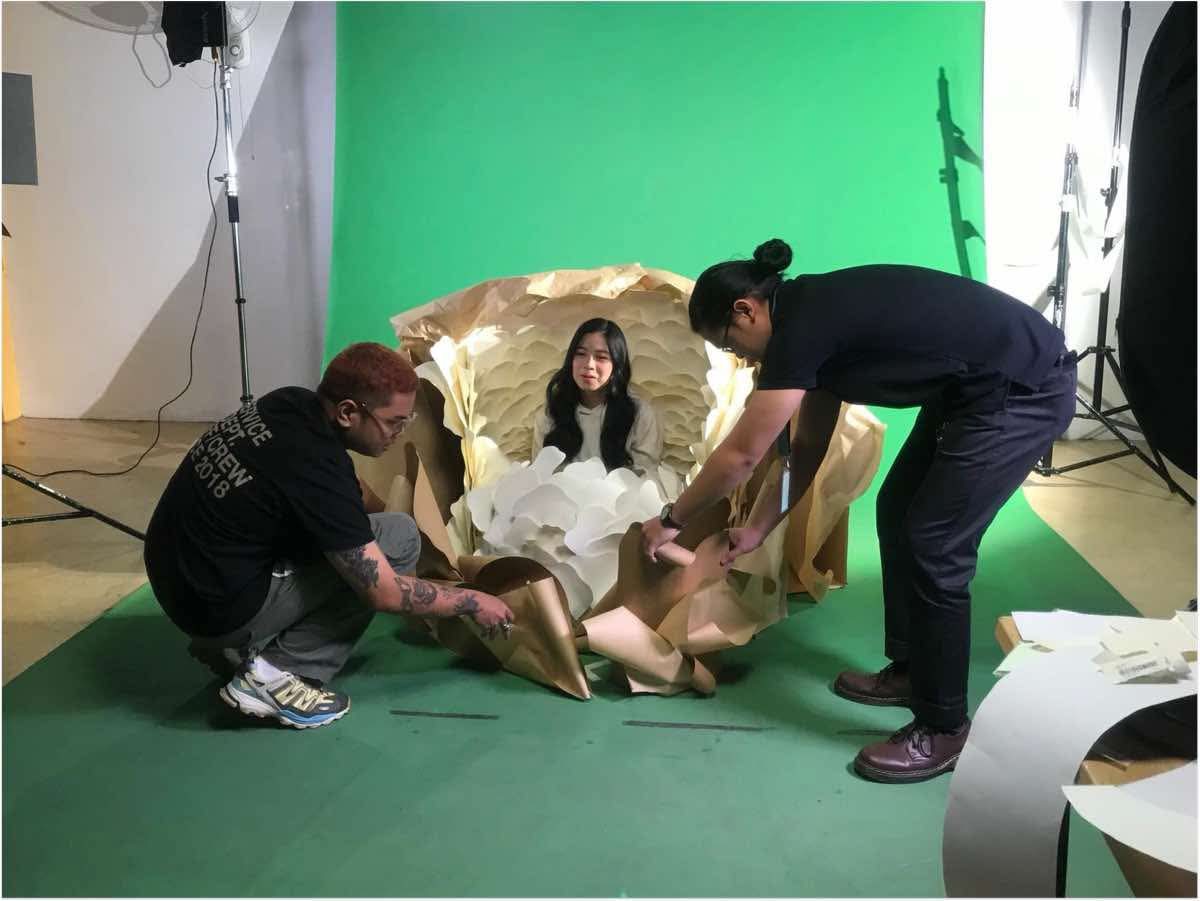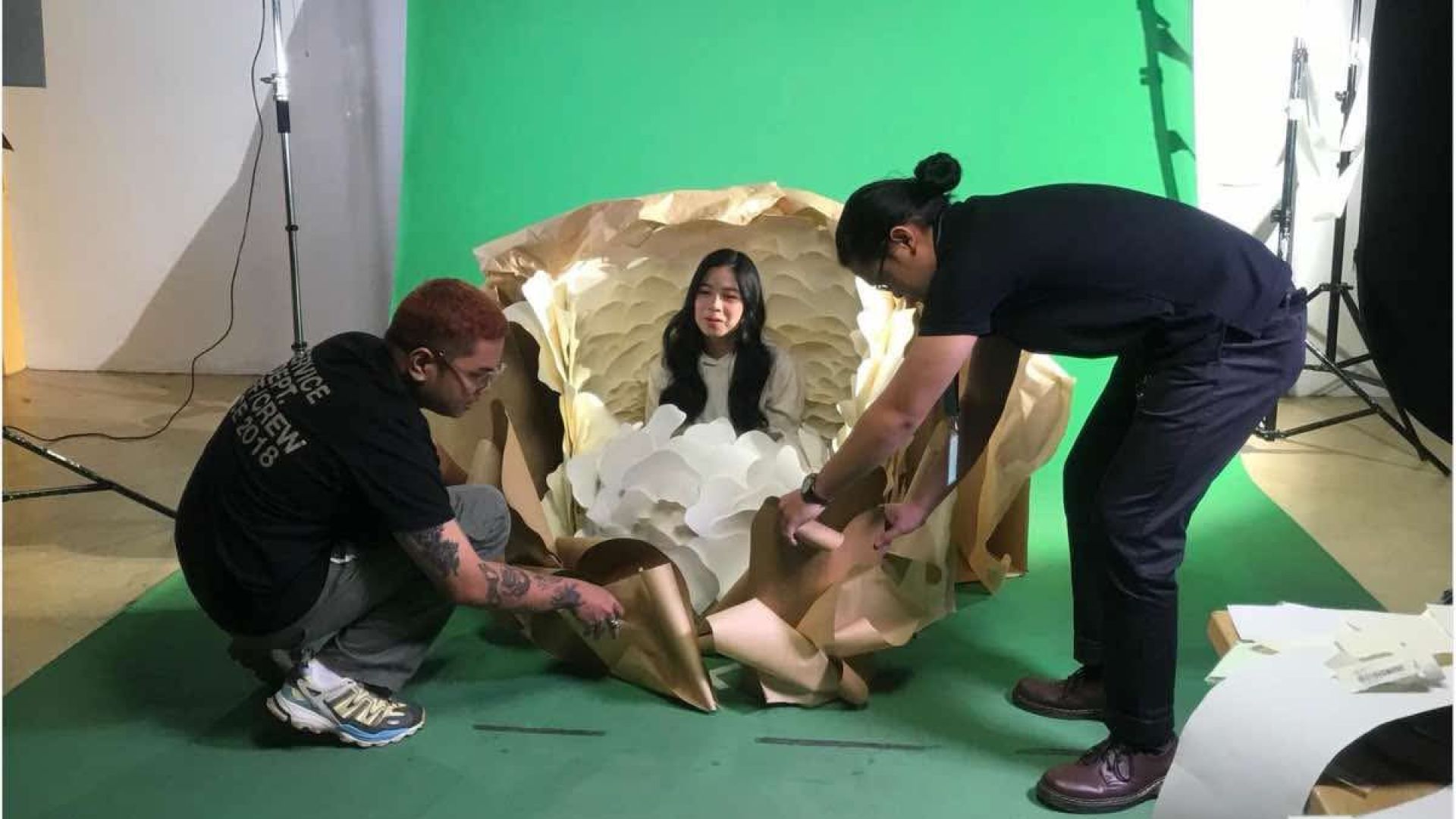The new era of “content creation”, where creativity and technology converge to populate the current media landscape, is creating new job opportunities, especially in the field of creative digital marketing.
This emerging trend puts educational institutions like Asia Pacific College (APC), a part of the SM Group, with its Multimedia Arts program at the forefront of providing an art education that serves as a viable springboard to stable careers.
 Asia-Pacific College Multimedia Arts students at work in the studio. APC’s arts program fuses creativity and technology to make art education relevant to the times.
Asia-Pacific College Multimedia Arts students at work in the studio. APC’s arts program fuses creativity and technology to make art education relevant to the times.
According to human resource services company John Clements Consultants, among the top five emerging jobs in the Philippines in 2024 is in digital marketing, where skills in producing content in various formats primarily for use in social media platforms is given a premium.
Online job search platform Jobstreet pegs the current average salary of a digital marketing specialist at Php 30,000 a month.
Arts in the multimedia age
Founded in 1991 as a partnership between SM Foundation and IBM Philippines, APC has been championing a curriculum that is calibrated to produce competitive IT professionals in country.
SM has long been a staunch advocate of quality education accessible to the underprivileged that leads to practical and meaningful jobs. APC is a direct result of this effort as it operates as a non-profit and non-stock institution.
Their Multimedia Arts program, with 384 students currently enrolled, addresses the demand for education that meshes technology and creativity. The program is designed to incorporate the most current disciplines in the creative field and the relevant knowledge of the digital creative tools currently used in the industry.
Students get to use several program-specific software to assist them in working on projects involving 2D and 3D animation, digital sculpting and painting, multimedia publishing, sound design and video production and photography.
Apart from the digital tools that students are able to use in their coursework, APC uses a project-based approach in their Multimedia Arts program.
“Our program is unique due to its highly focused and in-depth courses,” says APC Executive Director Robert Besana. “The extensive hours students spend in the studio producing creative works are paramount to their learning. The more time they dedicate to studio work, the more they hone their skills. Additionally, the mentor-apprentice dynamics between professors and students are key to creating a more engaging learning environment. Professors act as facilitators of learning rather than just lecturers,” Mr. Besana adds.
Teachers as mentors
Many of the instructors in APC’s Multimedia Arts department are industry practitioners themselves, providing real-world industry perspectives and relevant on-the-job exposure to students.
Among them is Jaime Pacena II, who teaches Video Production, Post-Production Techniques, Scenography and Photography. A seasoned visual artist, music video director and filmmaker, Mr. Pacena II won the Best Director plum in the 2024 Cinemalaya Film Festival for his film Kono-Basho, shot entirely in Japan.
“I involve a lot of my students in most of my own projects. I have worked with many of them in my music video projects. Some of them had actually worked with me on the film I shot in Japan,” Mr. Pacena says.
APC’s project-based learning enables students to work with different clients who are partners of APC.
“We have a subject called Seminars where we invite different industry professionals to talk to our students directly, intimately, in a classroom setup.
Multimedia Arts graduates from APC have gone on to work in different fields in the growing digital creative industry.
“Many have gone into post-production, studio design, music video-making, TV directing, corporate videos, among others. Some have set up studios of their own, creating their own opportunities as well,” Mr. Pacena says.




